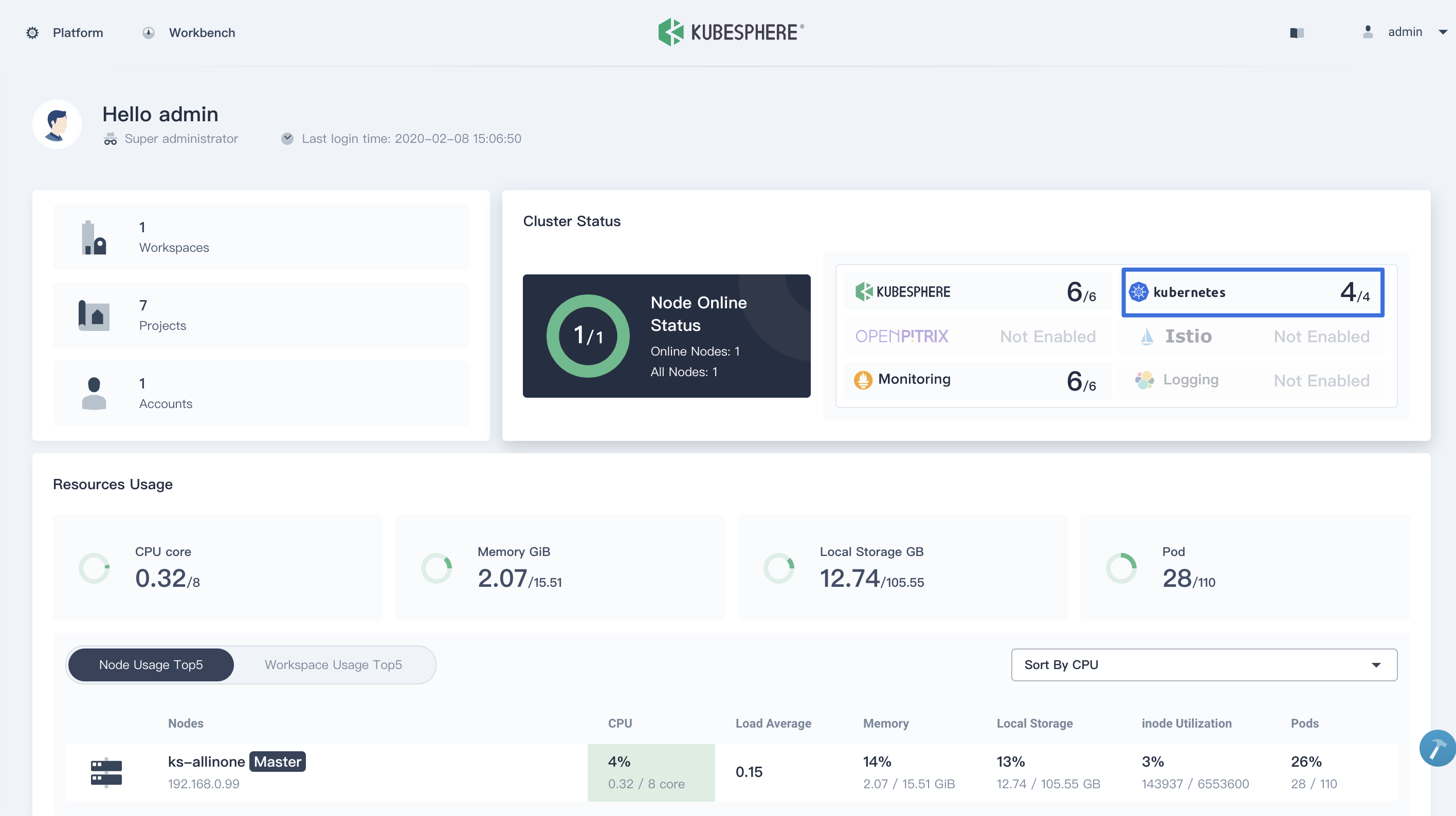KubeSphere Container Platform
This page was last updated February 17, 2018.
Follow these instructions to prepare the KubeSphere Container Platform for Istio. You can download KubeSphere to easily install a Kubernetes cluster on your Linux machines.
Prerequisites
A Linux machine that is either a virtual machine or bare metal. This machine requires at a minimum:
Hardware:
- CPU: at least 2 Cores
- Memory: at least 4
GB
Operating Systems:
- CentOS 7.4 ~ 7.7 (
64-bit) - Ubuntu 16.04/18.04 LTS (
64-bit) - RHEL 7.4 (
64-bit) - Debian Stretch 9.5 (
64-bit)
- CentOS 7.4 ~ 7.7 (
Provisioning a Kubernetes cluster
Download KubeSphere to your Linux machine, move to the KubeSphere directory. For example, if the created directory is
kubesphere-all-v2.1.1:$ curl -L https://kubesphere.io/download/stable/latest > installer.tar.gz $ tar -xzf installer.tar.gz $ cd kubesphere-all-v2.1.1/scriptsExecute the installation script, it will create a standard Kubernetes cluster. Select the “1) All-in-one” option when prompted:
$ ./install.shInstallation may take 15 ~ 20 minutes. Wait until all pods are running. Access the console using the account information obtained from the installation logs:
##################################################### ### Welcome to KubeSphere! ### ##################################################### Console: http://192.168.0.8:30880 Account: admin Password: It will be generated by KubeSphere Installer
Enable installing Istio on Kubernetes
KubeSphere will install Istio within Kubernetes. Now reference Enable Service Mesh to enable Istio.